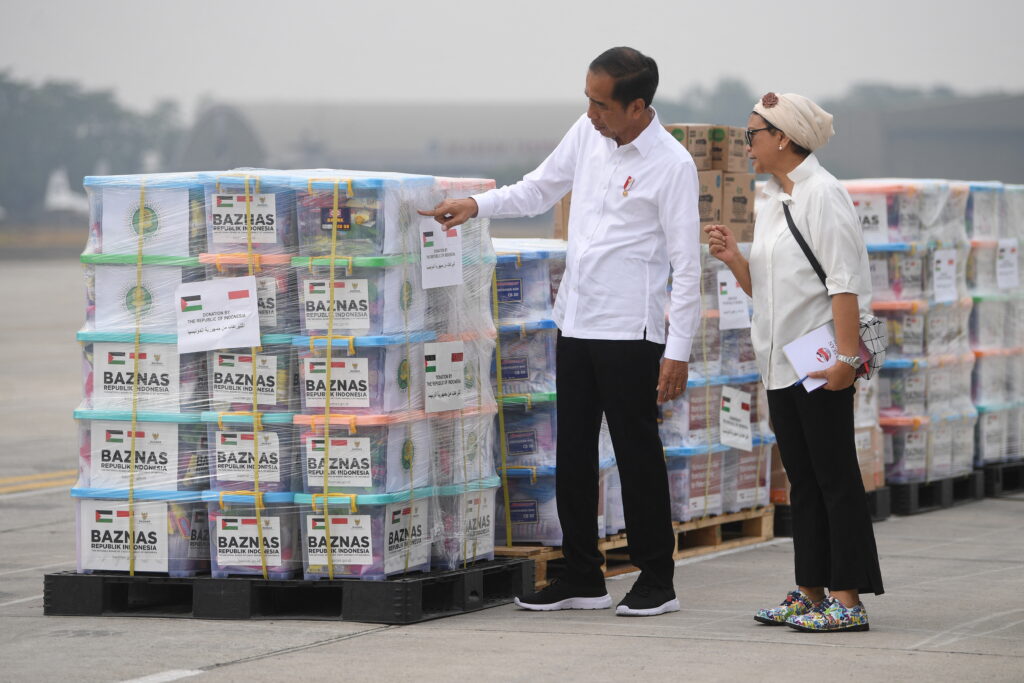Indonesia is actively enhancing its global influence and refining its approach to economic diplomacy through its Indonesian AID program. The program demonstrating its commitment to international development by consistently providing technical assistance in the Pacific region.
The Indonesian AID initiative is driven by two main factors: Indonesia’s strong economic performance from 2015–19 and the need to navigate global challenges, such as trade tensions and conflicts. These factors underscore the need to shift more towards integrated international cooperation to sustain domestic economic growth.
Indonesian AID further aligns with the Indonesian government’s financial reforms and offers a more cohesive approach to foreign assistance, moving away from the fragmented efforts seen prior to 2019. Described by former Vice President Jusuf Kalla as ‘helping hand diplomacy’, Indonesian AID is envisioned not just as an aid agency but as a potential tool for strategic economic diplomacy that can reduce transaction costs, improve resource allocation and promote foreign direct investment.
One recent demonstration of Indonesian AID was in March 2024, when Indonesia donated 10 million doses of polio vaccine to Afghanistan. But implementation of Indonesian AID raises two critical questions. The first has to do with the potential consequences of Indonesia providing foreign aid while still receiving it from other countries. The second how Indonesia, as a middle-income country, can optimally tailor its development assistance to maximise impact and effectiveness.
It is important to note that Indonesia is not unique in this dual role. Brazil, for example, both provides and receives assistance, managing its international technical cooperation through the Brazilian Cooperation Agency, which is affiliated with the Ministry of External Relations.
Brazil’s engagement as both a recipient and a provider of international aid highlights its role as an emerging economy participating in South–South cooperation. This type of cooperation, involving the exchange of knowledge, resources and expertise among developing countries, aims to foster mutual benefits based on solidarity. This contrasts sharply with the traditional donor–recipient dynamics of North–South aid. By providing aid, Brazil strengthens its international influence and leadership, especially within Latin America and other developing regions.
Similarly, Indonesia’s active engagement in both providing and receiving international aid reflects its evolving status in the global economy and emphasises its commitment to fostering international development. The commercial motives of Indonesia’s foreign aid are also significant. Indonesian foreign aid, particularly through Indonesian AID, strategically promotes commercial interests, especially in the health sector. This includes the pharmaceutical industry, which grew by as much as 13 per cent in 2020, as well as the medical device sector, which jumped by 25 per cent in 2018.
The COVID-19 pandemic further boosted these sectors, leading to increased export opportunities. For instance, Indonesian exports to Papua New Guinea surged from US$139.01 million in 2020 to US$196.73 million in 2021. Similar increases were seen in exports to Fiji and the Solomon Islands. This highlights Indonesian AID’s use of foreign aid to enhance economic diplomacy and expand its market reach.
In addressing how Indonesian AID can enhance Indonesia’s international development impact, Indonesian AID could play a pivotal role in enhancing Indonesia’s global image, amplifying its soft power and transforming international perceptions, as highlighted by Indonesia’s recent leadership roles in the G20 and ASEAN.
Indonesian policymakers should embrace three main strategies to sustain the momentum of Indonesian AID and maximise future opportunities. The first is developing a robust branding strategy that incorporates Indonesian cultural elements while addressing the specific needs of recipient governments, similar to South Korea’s International Cooperation Agency and China’s International Development Cooperation Agency. This should include fostering cultural exchanges to deepen diplomatic ties and overcome traditional aid challenges, such as unrealistic donor expectations and insensitivity to local conditions.
The second strategy is prudent and diverse funding management. As a public agency, Indonesian AID will manage its funds, sourced from the state budget, as an endowment. This approach aims to boost fund management efficiency and the effectiveness of grant distribution. With an expected managed funds value of approximately Rp 8 trillion (US$500 million) by 2024, this strategy is designed to minimise reliance on the national budget. Enhancing Indonesian AID’s human capital with certified financial expertise is crucial for navigating the global economic landscape, including the potential use of Sharia financial instruments.
The final strategy involves a meticulous fund distribution approach, focusing on the fiscal health and debt sustainability of recipient nations.
Indonesian AID should leverage soft loans, which have demonstrated low default risks and significant benefits for recipient countries, as seen in the Korea International Cooperation Agency’s strategy. This ensures that the aid aligns with strategic objectives and supports sustainable development, avoiding the pitfalls of aid fungibility which can exhaust recipient governments and strain relationships with donor countries. Through these measures, Indonesian AID can do more than just provide aid but also build lasting partnerships based on mutual benefit and respect.
Eko Sumando is an official within the Indonesian Ministry of Finance and a PhD candidate at the Crawford School of Public Policy, The Australian National University. The opinions expressed in this article are his own and do not represent the official stance of his institutions.

